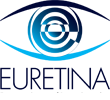Adverum Biotechnologies (NASDAQ: ADVM) has announced to sell approximately 106.25 million shares of its common stock at a price per share of $1.20 to institutional and accredited healthcare investors in a private placement. The funding will be to support current operating plan into late 2025, including the support of ixoberogene soroparvovec (Ixo-vec; formerly referred to as ADVM-022), as a one-time, IVT injection for patients with wet age-related macular degeneration (AMD). The treatment is aimed to use a single-dose gene therapy encoding for the proven anti-VEGF protein, aflibercept. According to Laurent Fischer, M.D., president and chief executive officer of Adverum Biotechnologies, “wet AMD is a leading cause of blindness in people over the age of 65, requiring life-long anti-VEGF injections. Our goal with Ixo-vec is to provide patients virtually injection-free management of their wet AMD lasting years and potentially for life”.
At the same time, Advernum announced preliminary safety and efficacy data from the ongoing “LUNA” Phase 2 trial in patients with wet age-related macular degeneration (AMD). Data were being presented by Dr. Arshad Khanani at the 47th Annual Meeting of the Macula Society, with a presentation entitled “Ixoberogene soroparvovec (Ixo-vec) Intravitreal Gene Therapy for Neovascular Age-Related Macular Degeneration: Preliminary Results from the LUNA Phase 2 Study”. The LUNA trial is an ongoing double-masked, randomized, Phase 2 trial. 60 patients with wet AMD were enrolled equally across two dose cohorts, 2E11 and 6E10 vg/eye. The study is designed to assess optimized prophylactic regimens, with patients receiving one and/or two locally administered corticosteroid regimens, with or without oral prednisone. Preliminary efficacy showed that both the 2E11 and 6E10 doses demonstrated maintenance of visual and anatomic outcomes. At 26 weeks, Ixo-vec demonstrated annualized reduction in anti-VEGF injection rates of 90% (n=19) at 6E10 and 94% (n=20) at 2E11. At 26 weeks, Ixo-vec demonstrated injection free rates of 68% (n=19) at 6E10 and 85% (n=20) at 2E11. The company also reported that visual acuity was maintained at both dose levels – mean BCVA change from baseline to last visit (95% CI): 2E11: -1.7 (-4.5, 1.2), 6E10: +0.5 (-2.2, 3.3). Anatomic endpoints were maintained at both dose levels – mean CST (μm) change from baseline to last visit (95% CI): 2E11: -16.4 (-31.5, -1.3), 6E10: -7.9 (-30.9, 15.0).
In follow-up to the data, Arshad M Khanani, M.D., M.A., FASRS, a Principal Investigator in LUNA trial, commented that, “based on my experience as an investigator for over five years across multiple clinical trials with Ixo-vec for wet AMD, it’s promising to see the sustained disease control and a significant treatment burden reduction after a single intravitreal injection of Ixo-vec in previously treated patients with wet AMD. Ixo-vec has the potential to shift the treatment paradigm for patients with wet AMD and I look forward to working with the Adverum team to advance Ixo-vec into pivotal studies.”
